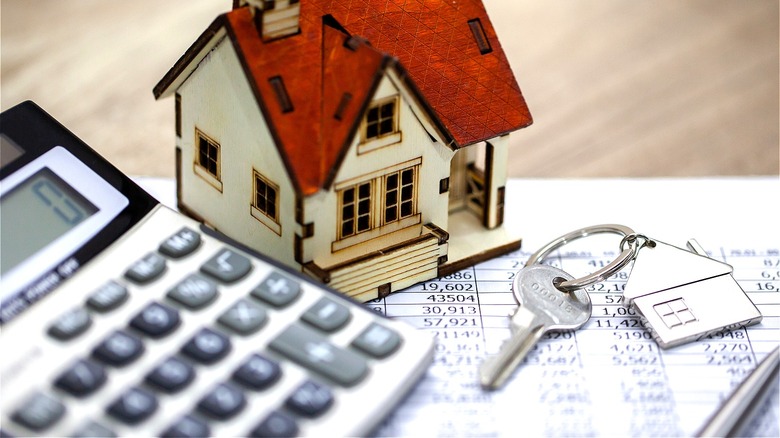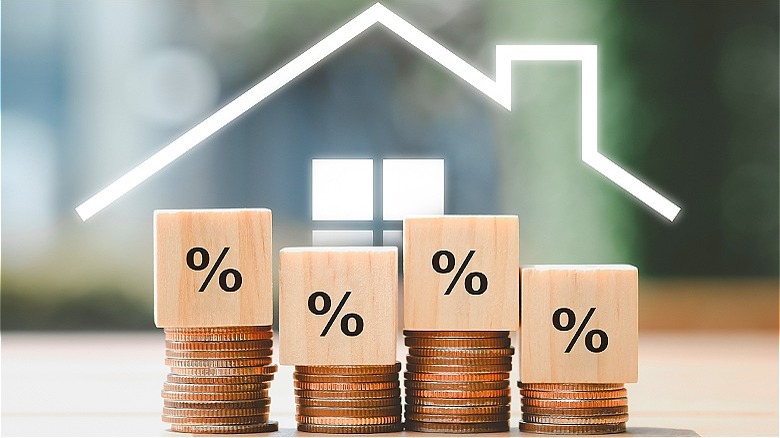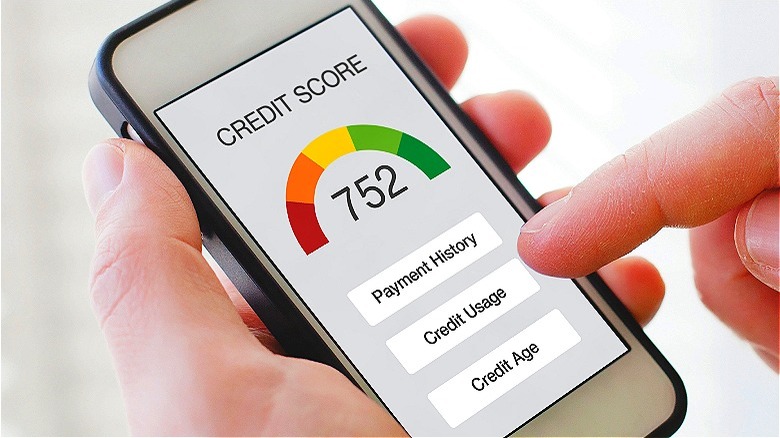How Much Can A 1% Difference In Mortgage Rate Cost Or Save You?
If you're in the market to purchase a new or new-to-you home, the odds are a mortgage loan will be involved. Indeed, according to the National Association of Realtors, approximately 68% of all homes as of January 2014 were purchased using mortgage loans. When you exclude investors and second-home buyers to focus on primary residences, that figure jumps to 81% of transactions requiring a mortgage.
Presently — nearing the end of June 2024 — the average rate for a 30-year fixed rate mortgage nationwide is 6.92%, per Bankrate. That's a far cry from the COVID-19 era, when mortgage rates of less than 3% were commonplace. Fortunately, the Federal Reserve is expected to begin lowering the federal funds rate, perhaps starting as early as sometime this year. Those rate cuts will likely ripple into the mortgage industry as well, giving homebuyers some relief in the form of lower mortgage rates.
Granted, rates may never return to the remarkably low levels of a few years ago (what really drives interest rates?), but 6% or even 5% rates aren't so far-fetched. The question is, what difference will a 1% difference make to a borrower's monthly payments as well as the total interest paid over the life of the loan? Let's break it down.
What's the difference in monthly mortgage payment?
For the sake of our 1% rate-difference example, let's assume a purchase price of $400,000, which is slightly less than the current national average price for a home. Assuming the buyer is able to make a 20% down payment, that leaves a balance of $320,000 to finance with a mortgage loan. Further, we'll assume that the mortgage is a fixed-rate, not adjustable, and has a 30-year term — the most common type of mortgage.
To begin, $320,000 financed at 7% for 30 years results in a monthly payment of $2,129 per month. Note that we're not including extras like property tax or insurance. That same amount financed at a rate of 6% is $1,919/month or $1,718/month at a rate of 5%. So, assuming a homebuyer purchases a $400,000 residence and makes a downpayment of 20%, the difference in 30-year fixed-rate mortgage payments is about $200 per month for every 1% shift in interest rates. (By the way, if you want to make a deeper dive on how much house you should buy based on income, we have an article for that.)
Some states, however, like California and Hawaii, have much higher home prices than the national average. Let's give another example featuring a $1,000,000 home with a 20% down payment, which equals $800,000 financed with a 30-year fixed-rate mortgage. The monthly payments at 7%, 6%, and 5% are $5,322, $4,796, and $4,295, respectively. That represents a difference in monthly payment of approximately $500 per month for each 1% change in the mortgage interest rate.
You pay considerably more over the lifetime of the loan
Next, let's take a look at how a 1% change in interest rates affects the total amount of interest paid over the life of the loan. Keeping our example of a $320,000 home loan financed at a fixed rate for 30 years, a borrower with a 7% mortgage rate will pay a total of $766,428.47 over the course of the loan. Subtracting the original loan amount, that's $446,428.47 total interest paid over the years. At a mortgage rate of 6%, meanwhile, the total amount of interest paid over 30 years drops to $370,682.20 or just $298,418.51 at a rate of 5%. On a more expensive home, the cumulative interest paid at a 1% higher rate could amount to hundreds of thousands of dollars over three decades.
While U.S. mortgage rates might seem high today versus the record-low rates observed during the COVID-19 pandemic, they're actually pretty typical by historical standards. In fact, mortgage rates hovered between ~6% and 8% for much of the entire decades of the 1990s and 2000s, until the Great Recession (2008 and 2009) forced the Federal Reserve to begin lowering interest rates to fight the economic downturn. If you want to see an example of truly high borrowing costs, look to the 1980s. During that decade, mortgage rates were routinely over 10% and spiked as high as 18% in 1981 as a byproduct of combating runaway inflation stemming from spiking oil prices and government overspending, among other factors.
Tips to score the best rate in any environment
While you can't control macroeconomic conditions affecting interest rates, there are a few steps you can take to secure the best mortgage terms for any point in time. To begin, try to improve your credit score as much as possible before beginning your house hunt. A credit score of 700 is a good starting point, with the best rates going to borrowers with credit scores of 740 or higher.
As well, lenders will want to see a pattern of stable income, as well as a sizable down payment on a home before unlocking the best interest rates. By committing 20% or more as your down payment on a property, you'll signal to the lender that you're putting "skin in the game" and will be less likely to default. As well, down payments of 20% or more circumvent the need for pricey private mortgage insurance (PMI), which can protect the lender if you default.
However, don't become so obsessed with timing the market for lower mortgage rates that you put your search on hold and miss out on your dream property. If rates fall after you've made your home purchase, there's always the opportunity to refinance at a new lower rate down the road. Just make sure the new rate is low enough to offset some of the fees associated with a refinance.



